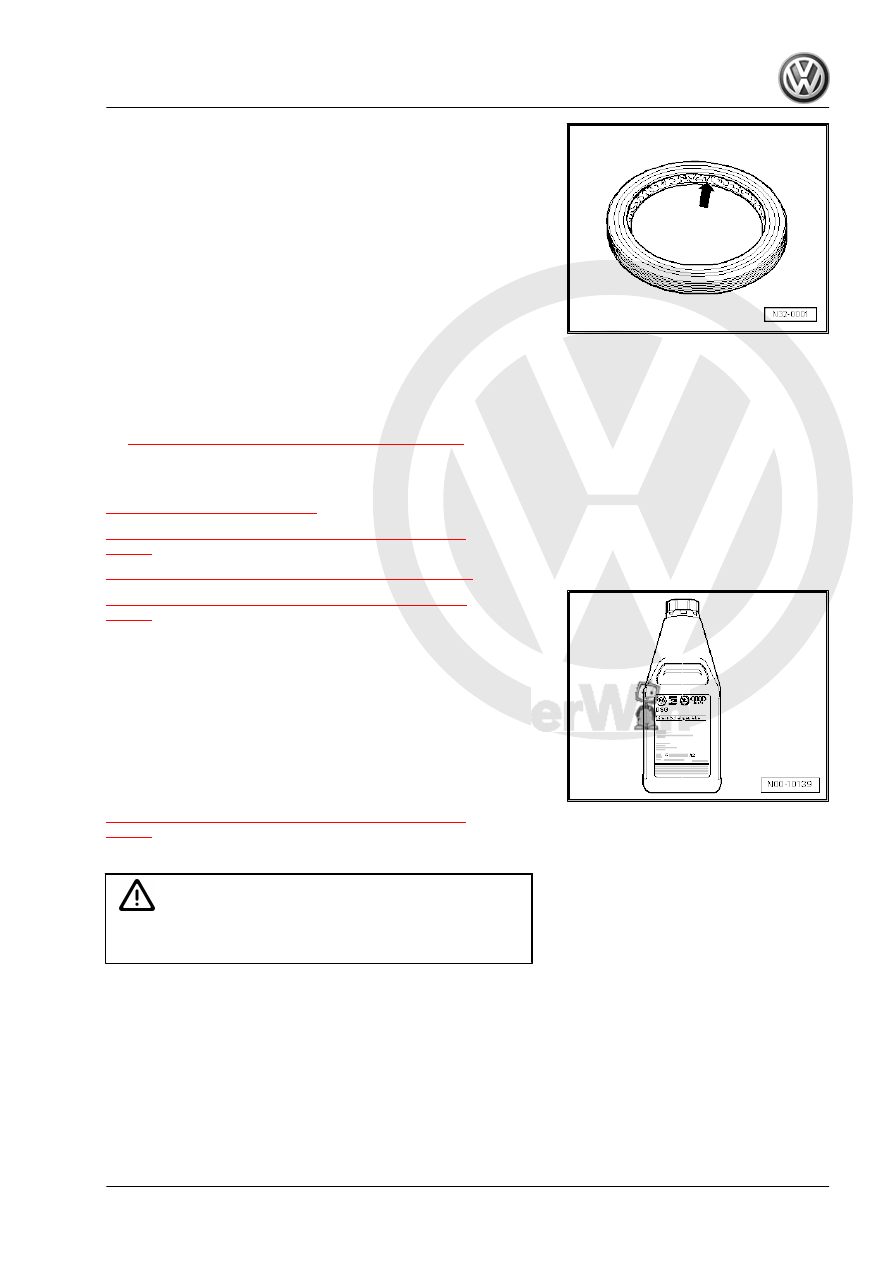Volkswagen Golf Variant / Jetta. Manual - part 314

O-Rings, Gaskets and Seals
♦ Replace the O-rings, seals and gaskets.
♦ Flange shaft and selector shaft seals are illustrated as shaft
seals.
♦ After removing the gaskets and seals, check the contact sur‐
faces on the housing or shaft for burrs resulting from removal
or damage.
♦ Before installing the seals, lightly oil the outer circumference
and fill the space between the sealing lips -arrow- halfway with
Grease - G 052 128 A1- .
♦ Only use DSG® transmission fluid. Other lubricants cause
malfunctions.
♦ The open side of the gaskets point toward the fluid to be sealed
in.
♦ After installing, check transmission fluid level and fill. Refer to
⇒ “9.2 Fluid Level, Checking and Filling”, page 133
.
1.5
DSG® Transmission Fluid
⇒ “1.5.1 Fluid Function”, page 3
⇒ “1.5.2 Transmission Fluid Filter, When To Change ”,
Shake the bottles before opening.
Fluid is available as an original part. Original part number. Refer
to the Parts Catalog.
The Quality of Transmission Fluid Is Crucial to Transmission
Function.
Do not mix additives into the transmission fluid. Do not fill with a
different transmission fluid.
Determine the correct fluid and other important information. Refer
to
⇒ “1.5.2 Transmission Fluid Filter, When To Change ”,
.
The drained transmission fluid must not be used again.
Caution
Be very careful when handling transmission fluid. Dispose of
drained transmission fluid correctly.
1.5.1
Fluid Function
The fluid does not just »lubricate« the transmission.
Imagine: the filter also transports the finest differential abrasive
parts in both filters. The fluid makes sure the lubricating film does
not wear off the differential tooth flanks. At the same time, it acts
as a switch valve pressure medium to enable it to perform its
functions.
It also seals the selector lever and helps the synchronizer rings
when shifting gears. The fluid conserves and transports warmth
1. General Repair Information
3